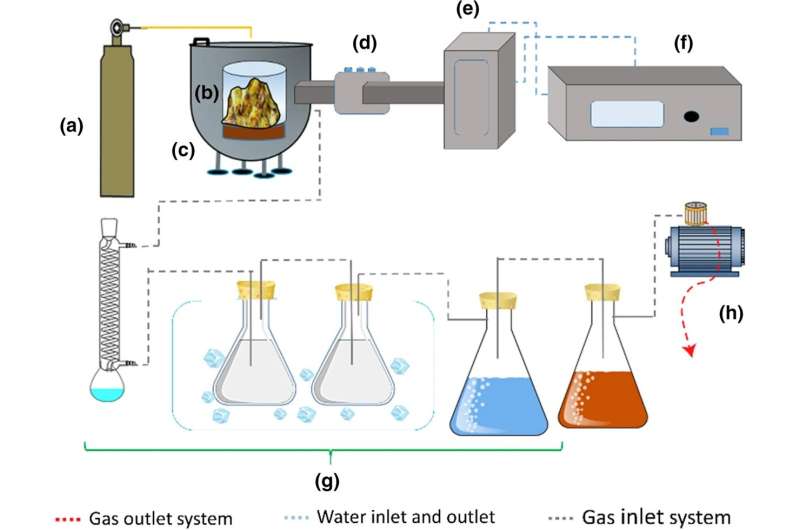This article has been reviewed according to Science X's editorial process and policies. Editors have highlighted the following attributes while ensuring the content's credibility:
fact-checked
proofread
Building a high-performance electrochemical sensor using activated biochar from pineapple peel waste

The agricultural industry produces a significant amount of food globally, but one third of the solid food produced each year goes to waste, resulting in negative environmental impacts and greenhouse gas emissions. To address this issue, researchers focused on converting agricultural waste, particularly pineapple peels, into a valuable carbon-negative biochar through microwave-assisted pyrolysis treatment.
In a new study published in the journal Waste Disposal & Sustainable Energy, researchers from James Cook University have successfully developed a high-performance electrochemical sensor using ZnCl2-activated biochar derived from pineapple peel waste. The study highlights the potential of transforming agricultural waste into valuable resources for environmental and economic sustainability.
ZnCl2 is a chemical agent that enhances its electrocatalytic activity. The activated biochar exhibited a high surface area, micropore structure, and oxygen-containing functional groups, which are crucial for electrochemical sensing applications. The researchers applied the activated biochar to a glassy carbon electrode (GCE) through drop casting.
The electrochemical properties of the ZnCl2-activated biochar-modified GCE were characterized using various techniques. The results showed a significant reduction in charge transfer resistance, indicating improved electron transfer kinetics. The electrochemical impedance spectroscopy revealed a 61% decrease in charge transfer resistance compared to the bare GCE.
Furthermore, the sensor demonstrated excellent sensitivity, with a limit of detection of 0.97 µmol L−1 for nitrite. It exhibited high selectivity, reproducibility (RSD=2.4%), and stability (RSD=2.6%) over ten days of storage. The sensor's performance was comparable to or better than existing electrochemical sensors reported in the literature.
This innovative approach to utilizing pineapple peel waste offers a sustainable solution for resource recovery and waste reduction. The conversion of agricultural waste into high-value biochar through microwave-assisted pyrolysis, followed by chemical activation, provides a versatile material for various applications, particularly in electrochemical sensing.
The researchers envision future applications of ZnCl2-activated biochar in environmental monitoring, food quality control, and medical diagnostics. The material's unique properties, such as its high surface area, micropore structure, and electrocatalytic activity, make it well-suited for detecting and analyzing different analytes of interest in these fields.
This study represents an important step towards a circular economy, and open up new opportunities for waste utilization and resource recovery, bringing us closer to a more sustainable and efficient future.
More information: Scarlett Allende et al, Nitrite sensor using activated biochar synthesised by microwave-assisted pyrolysis, Waste Disposal & Sustainable Energy (2023). DOI: 10.1007/s42768-022-00120-4
Provided by TranSpread





















